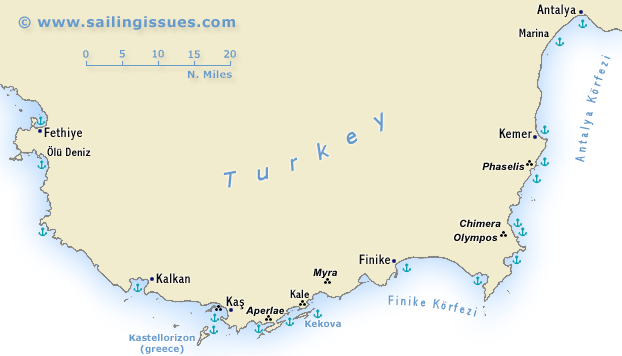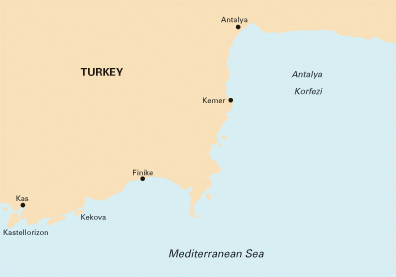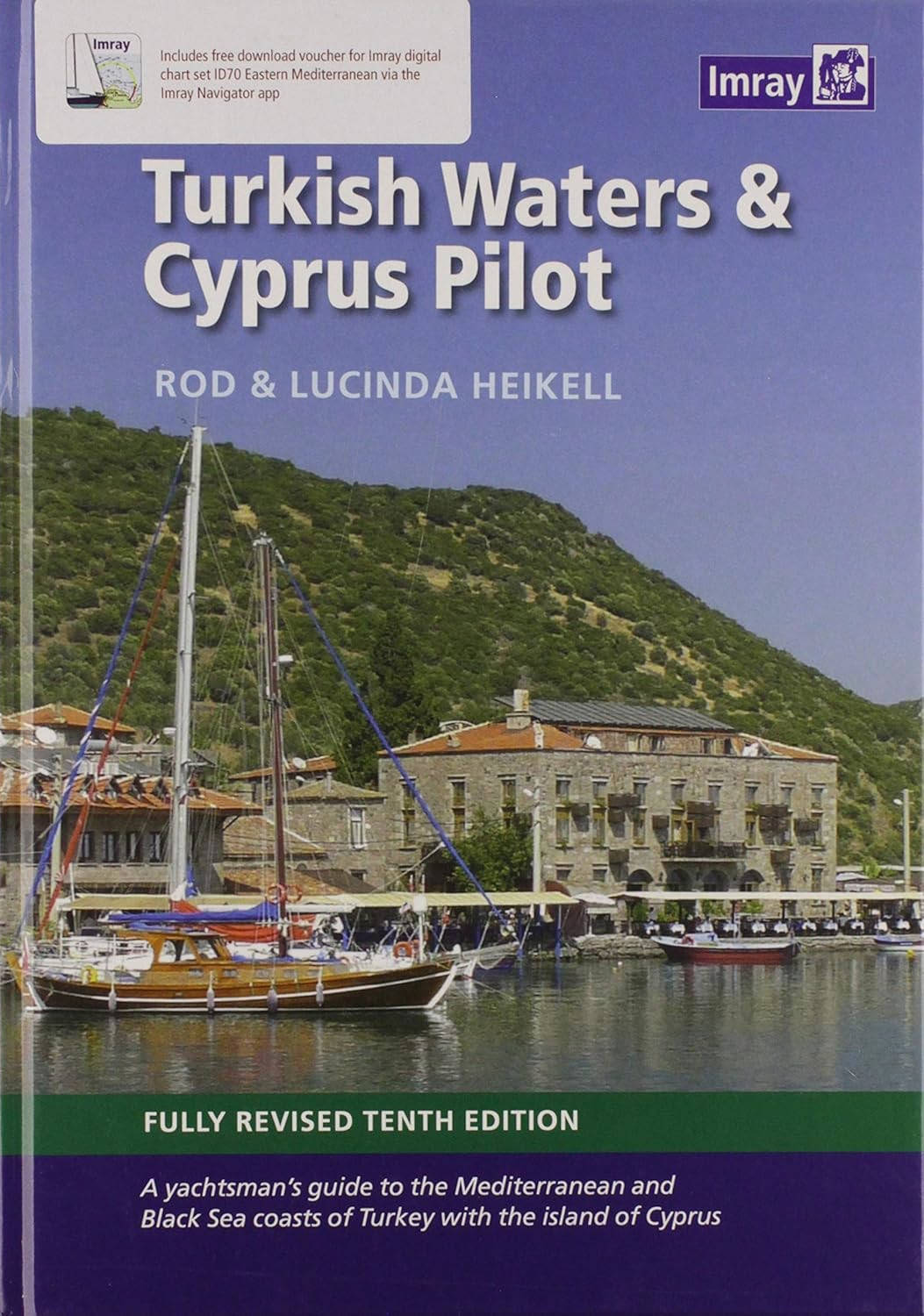East Lycian coast
Sailing holidays Turkey
The East Lycian coast is much less indented than for instance the Carian coast, yet the stretch of coastline between Kalkan and Finike does offer quite a few must-see secluded coves and bays. Like the West Lycian coast its terrain is rather mountainous and inaccessible. The main yacht charter bases can be found in Fethiye and Antalya.

In 546 BCE, when the Persian troups swepped over Asia Minor (where piracy was common along the shores), the Lycians responded by burning their capital Xanthos, along with goods and chattels, women and children, and went to battle fighting till the last man.
Piracy is again mentioned in the 5th century BCE, but it is not until the Roman occupation of Asia Minor that attempts were again made to bring it under control. In 78 BCE a campaign was mounted by Servilius Vatia, governor of Cilicia, and though he had moderate success, it did little to check it. In 67 BCE Pompey, an able and intelligent admiral, was given wide-ranging powers and almost unlimited resources to tackle the piracy problem, which he did with total success. However Pompey was reluctant to give up his power and his ships and became himself something of a thorn in the Senate's side. After the fall of Rome the Lycian coast once again became a haven for pirate fleets and not until the 18th and 19th centuries and the presence of the British Navy was the piracy problem again tackled and the Lycian coast cleaned up.
In this remote region of Turkey the sites of over thirty cities have been found which allows us to study the culture of the Lycians. The most obvious features of the Lycian landscape are the tombs and sarcophagi left behind. They are everywhere and it is difficult not to think of the region as a vast necropolis peopled with the shadowy figures of Lycian nobles and warriors. Ancestor-worship was evidently important to the Lycians and the tombs are extravagant affairs, the more grandiose decorated with a frieze and inscriptions placing a curse upon anyone tampering with the tomb.
With the decline of the Roman Empire, so too Lycian fortunes declined. In Byzantine times there were small settlements around the coast, a number of Byzantine churches will be seen in isolated spots, but the interior was not heavily populated as in Lycian times. In the late Middle Ages this region was viewed as a wilderness, and the coast yet again harboured pirates.
Lycian tombs
Five distinct types of tomb can be distinguished:
- Pillar-tombs are specific to Lycia and were for important dynasts.
- Temple-tombs are maybe the most impressive of the Lycian tombs and consist of a temple facade with a grave chamber behind it.
- House-tombs were modelled on the wooden houses of the Lycians and so give us some idea of what everyday accommodation was like several thousand years ago.
- Pigeon-hole tombs were the down-market version of temple and house tombs, small unadorned chambers cut into a cliff-face.
- Sarcophagi are ubiquitous: even submerged where land retreated. In Roman times the sarcophagi became smaller and less ornate, perhaps as the importance of ancestor-worship declined.
Sailing Kalkan, Kas, Finike & Antalya
The Eastern Lycian coasts are as beautiful as they are rugged, harbouring an abundance of cultural sites, notably: Fethiye, Kalkan, Kas, Finike and Antalya. The remains of several ancient cities like Aperlae, Myra, Kale, Olympos and Phaselis can easily be visited by yacht.
Between Kas and Antalya, the prevailing winds – even in high season – can let you down for days or weeks, and often sailing yachts will be seen motoring to the next anchorage or port.
In these poor conditions, visibility is usually low and the air moist. Yet, even in these tranquil conditions you will have to anchor safely to allow for the evening land breeze.
The area is famed for its blue translucent seas and certainly less crowded than the Marmaris and Fetiye stretch.
Rod Heikell
Guide to the coast of Turkey from the Bosphorus to the Syrian border and Cyprus has been updated and improved throughout.
From Amazon.co.uk
 Imray Chart G40:
Imray Chart G40:
East Carian coast
 Turkish Waters & Cyprus Pilot
Turkish Waters & Cyprus Pilot